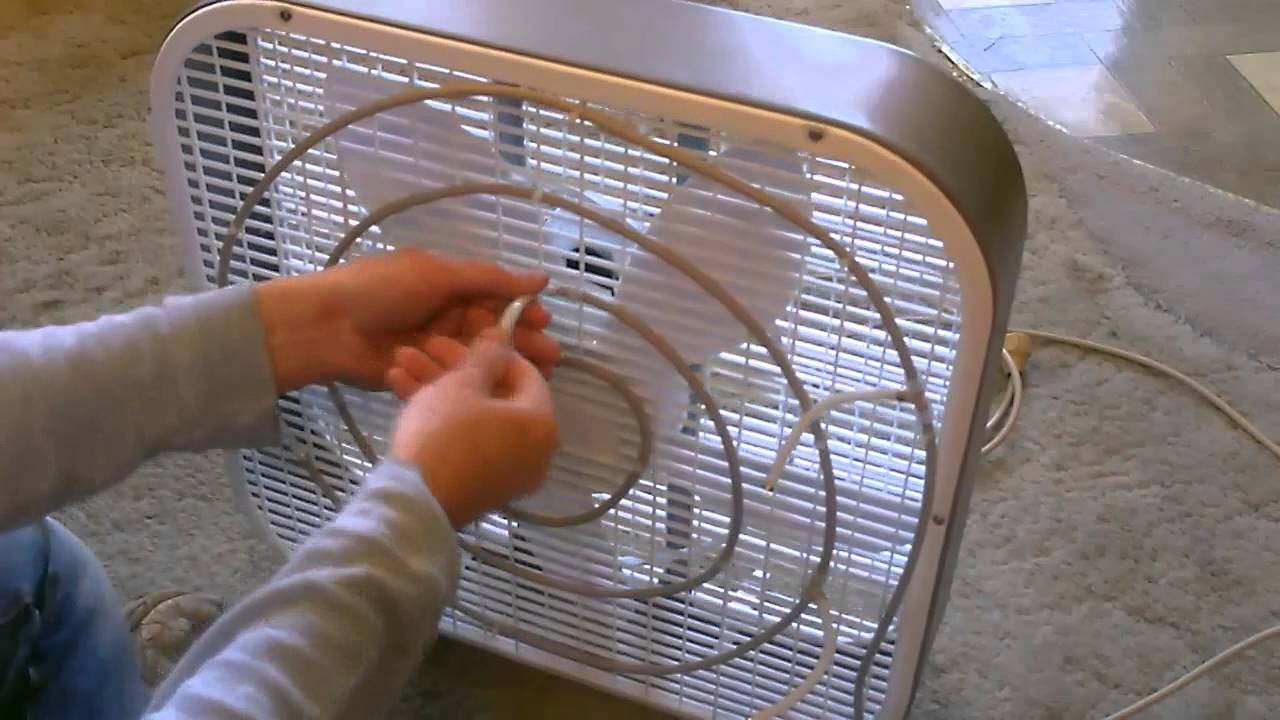When I looked at prices for having air conditioning in Milton Keynes I nearly fell off my chair. At the time, money was tight so I started looking into other options and found that you really can build your own air conditioner! Here we’ll talk about the two methods that can be used. Air conditioning energy usage makes up 20% of our entire national energy usage. So if you’d like to save yourself the expense or help the environment, then why not try building your own air conditioner using either a box fan with a cooler or a box fan with a radiator.
Method 1: Box Fan with a Cooler
Firstly, unscrew the front gridded panel of the box fan. Then, twist 6mm copper tubing in concentric circles starting in the middle of the outer side of your grid. Attach the end of a length of copper tubing to the middle of the grid using zip ties. Twist this tubing into a small circle. Continue to twist the tubing around the original circles until you have a series of concentric circles. Then, connect the tube to the grid with zip ties. You want ample tubing attached to your grid, but careful not to attach too much as the air needs to be able to pass through the spaces between the tubing.
Screw the panel, with tubing attached, back onto the box fan. Attach one end of a 9.5mm clear pliable tube to the fountain pump and the other end to the top end of the copper tubing. The perfect tubing for this project is the kind of tubing used in fish tanks. Get some plumbers putty and roll it between your hands to mould a strip. Wrap the strip of putty around the connection between the pliable hose and the tubing and press it in to seal the connection. Connect another piece of 9.5mm plastic tubing to the other end of the copper tubing and seal the connection with the plumber’s putty. Allow an hour for the putty to properly dry.
Fill the cooler with ice cold water and submerge the unconnected end of the second plastic tube under the water. Put the fountain pump in the cooler. Place a towel under your fan to catch the condensation that will form on the outside of the copper pipes. And hey presto! Plug the fountain pump in and turn on the fan . . . it’s as simple as that. You just built your own cooling system!

Method 2: Build an Air Conditioner using a Recycled Radiator
Be sure to clean the radiator before use. You can soak it in water and mild soap then let it air dry. Once dry, place a high-speed fan behind the radiator. You might have to put something under the radiator to align it with the fan.
Attach a garden hose to a spigot on the outside of your house. Connect the vinyl tubing to the inlet tube on the radiator. You might have to try some different sizes to find what’s right to fit over the copper tubing from the radiator. The tube needs to be long enough to connect with the hose outside.
Feed the tubing through a window and attach the tubing to the spout end of the garden hose using duct tape. You might need to cut a small hole in your window glass to make this work.
Coil the garden hose up and wrap it in a towel for insulation. Wrap pipe insulation around the exposed end to keep the water cool.
Attach another length of plastic tubing to the outlet tube of the radiator. Then, thread your tubing upwards through the window so that the water is expelled onto your roof or into your guttering. If you expel the water onto your roof then you’ll need to ensure that the overflow that hits the ground doesn’t flood your cellar if you have one. Try putting a large plastic rubbish bag underneath the stream to catch the water and then you can recycle the water into your garden.
Connect a small hand valve to the plastic inlet tubing that goes into your radiator. Cut the plastic tubing to leave a 15cm stub attached to the copper inlet tube of the radiator. Then connect the end that release water to the stub of the inlet tube.
Link the side that pulls in water to the tube that’s connected to the garden hose. Then open the hand valve completely. Outside, open the garden hose spigot to find the right water flow volume. Plug the fan in and turn it on. When you’re ready to turn off your handmade air conditioner, close the hand valve and unplug your fan.
As you can see, method one is far more uncomplicated, but method two is far more suited to larger systems, so it just depends what your requirements are really.
Enjoy!
